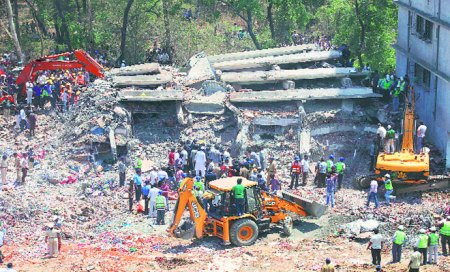 Vaijayanti — a battle tank used in the 1971 war — was installed outside the Mumbra railway station in 2013. Deepak Joshi
Vaijayanti — a battle tank used in the 1971 war — was installed outside the Mumbra railway station in 2013. Deepak Joshi
ON SUNDAY, when some Mumbra residents heard about JNU Vice-Chancellor M Jagadeesh Kumar talking about installing an army tank inside the university campus “to remind students about the sacrifices and valour of the Indian Army”, their thoughts went back to another military tank, the one installed in their own backyard, outside the Mumbra railway station. They thought about Vaijayanti — a battle tank used in the 1971 war installed outside Mumbra station — that started out as a tourist attraction but has over the past few years become a forgotten landmark “frequented mostly by drug addicts”.
In 2013, the battle tank was installed by the Thane Municipal Corporation (TMC) and NCP MLA Jitendra Awhad at the spot outside Mumbra railway station. According to the engraving behind the raised platform where the tank is placed, ahead of a rickshaw stand, former President Pratibha Patil had dedicated the tank, which played an important role in India’s victory in the 1971 war, to Major Manish Pitambre, who gave his life while protecting the country.
According to local residents, while there was a lot of curiosity about the tank at first, with people even coming and taking pictures with it, the interest waned over time. Along with the interest, maintenance of the structure has been neglected too, they claim. A railing outside the tank has bills of local newspaper and behind it, and a hoarding advertising coaching classes offered by an institute covers a section of the tank.
“Drug addicts sometimes assemble near the tank in evenings. When we ask them to get off the tank, they ask us if the tank belongs to us. We drive them away, but they return. We have to keep taking rounds to ensure that they do not assemble here,” said a police officer in a van parked behind the tank.
An officer at the Mumbra police chowky, located a little distance away from the tank, said children playing near the station often “climb up the tank”. “We go there and ask them to get off,” he said.
Altaf Hussain, an employee working at a store opposite the tank, said, earlier, a lot of people used to visit the tank.
“Now, you will only see youngsters sometimes, clicking selfies with it on Sundays. The novelty factor has worn off,” he said.
Shahnawaz Shaikh, an employee at the railway ticket dispensing shop near the tank, said, “Today, they have cleaned the area. But normally, a lot of garbage gathers around here. Initially, the area would be cleaned on a daily basis.
Now it is cleaned only once in a while.”
His colleague, who did not wish to be named, said homeless people would climb on the platform and eat their meals there. “Sometimes, they leave behind the leftovers, which have accumulated over time,” he said, adding: “Many people come and sleep on the platform at night. They wake up and leave in the morning.”
TMC Public Relations Officer Sandeep Malvi said, “If the structure falls under the TMC, we will ensure that it is cleaned regularly. We will coordinate with the police to ensure people do not climb up the structure.”
Most people, including the shopkeepers and policemen, struggled to remember the significance of the battle tank, with the engraving hidden away at the back of the structure. After some thinking, a youngster said, “I think it was dedicated to some brave soldier from near here who lost his life in a war. I do not remember the name, though.”
